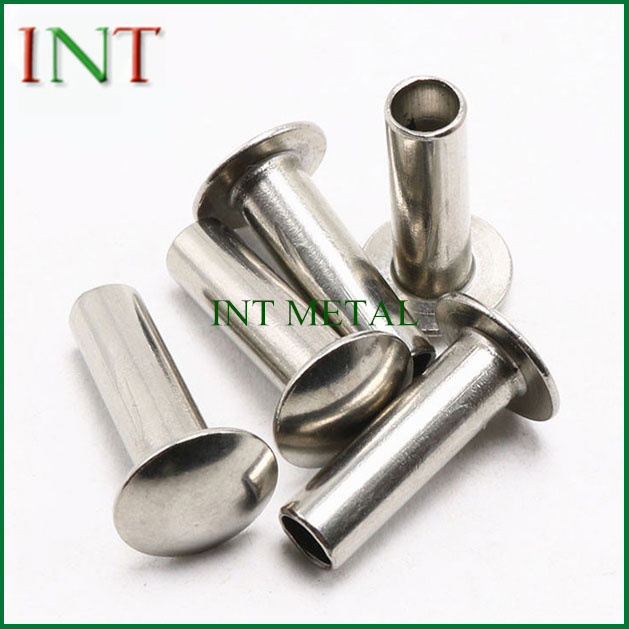Navigating Challenges: Addressing Limitations of Hollow Steel Rivets
2024-05-10
In the realm of fastening solutions, hollow steel rivets stand as stalwart companions, reinforcing connections with their robust construction and unwavering reliability. However, like any engineering solution, hollow steel rivets are not without their limitations and drawbacks. Understanding these challenges and implementing effective mitigation strategies is crucial for ensuring optimal performance and reliability in industrial and manufacturing applications. Let's explore some common limitations associated with hollow steel rivets and how these challenges can be effectively mitigated.
Limitation 1: Limited Reversibility:
One of the primary drawbacks of hollow steel rivets is their limited reversibility. Unlike screws or bolts, which can be easily removed and replaced, rivets form permanent, non-reversible connections. This can pose challenges in applications where disassembly or rework is required, such as maintenance or repair operations.
Mitigation Strategy: To address this limitation, engineers can design assemblies with accessibility and serviceability in mind. By incorporating access panels, removable covers, or modular components, maintenance tasks can be performed without the need for extensive disassembly. Additionally, using blind rivets with mandrels that break off flush with the rivet body can facilitate easier removal and replacement if necessary.
Limitation 2: Joint Strength Variability:
Another challenge associated with hollow steel rivets is the potential for variability in joint strength. Factors such as inconsistent rivet installation, material deformation, or surface irregularities can affect the integrity of the joint and compromise its strength and reliability.
Mitigation Strategy: Quality control measures should be implemented throughout the riveting process to ensure consistent joint strength. This includes proper rivet selection, accurate hole preparation, precise installation techniques, and thorough inspection of finished assemblies. By adhering to strict quality standards and protocols, manufacturers can minimize variability and ensure consistent performance in riveted joints.
Limitation 3: Corrosion Susceptibility:
While hollow steel rivets are typically made from corrosion-resistant steel alloys, they are still susceptible to corrosion in certain environments. Exposure to moisture, salt, chemicals, or galvanic reactions can degrade the rivet material over time, compromising the integrity of the joint.
Mitigation Strategy: To mitigate corrosion risks, engineers can employ various preventive measures, such as selecting corrosion-resistant rivet materials, applying protective coatings or surface treatments, and implementing proper drainage and ventilation systems to reduce moisture buildup. Regular inspection and maintenance practices should also be established to detect and address corrosion issues early, preserving the longevity of riveted joints.
Limitation 4: Limited Load-Bearing Capacity:
While hollow steel rivets offer excellent strength and reliability in many applications, they may have limitations in terms of load-bearing capacity, particularly in high-stress or heavy-duty environments. In such cases, alternative fastening methods or reinforcement techniques may be necessary to achieve the required structural integrity.
Mitigation Strategy: Engineers should carefully assess the load requirements and structural demands of the application to determine the suitability of hollow steel rivets. When higher load-bearing capacity is needed, considerations such as rivet size, material strength, joint configuration, and additional reinforcement measures should be evaluated. This may involve using larger diameter rivets, increasing the number of rivets per joint, or incorporating supplementary fasteners such as bolts or welds to reinforce critical areas.
Limitation 5: Complexity in Tight Spaces:
In applications where access is limited or restricted, such as confined spaces or overhead installations, the installation of hollow steel rivets can be challenging and time-consuming. Tight tolerances and awkward angles may complicate the riveting process, leading to potential errors or inconsistencies.
Mitigation Strategy: To overcome challenges in tight spaces, engineers can utilize specialized rivet installation tools and equipment designed for confined environments. This may include compact pneumatic riveters, flexible extension arms, or articulating rivet guns that provide enhanced maneuverability and reach. Additionally, pre-assembled rivet sets or pre-drilled holes can streamline the installation process and minimize the risk of errors in challenging conditions.
In conclusion, while hollow steel rivets offer numerous advantages in terms of strength, reliability, and efficiency, they are not without their limitations and drawbacks. By understanding these challenges and implementing effective mitigation strategies, engineers and manufacturers can maximize the performance and reliability of riveted joints in industrial and manufacturing applications, ensuring the continued success of their projects.



